**Foreword**
Microwhales have been on the move since last year's cross-border micro-investment. In just one year, they've launched two Type 4 projectors. From the first-generation portable K1 and the improved K1 Plus, they've developed high-definition quality. The F1 series (including the improved F1 Plus) has brought daydreams to life for countless users. Today, Microwhales are back with another exciting move—grabbing a spot before Double 11 to launch their stylish new model, M1.
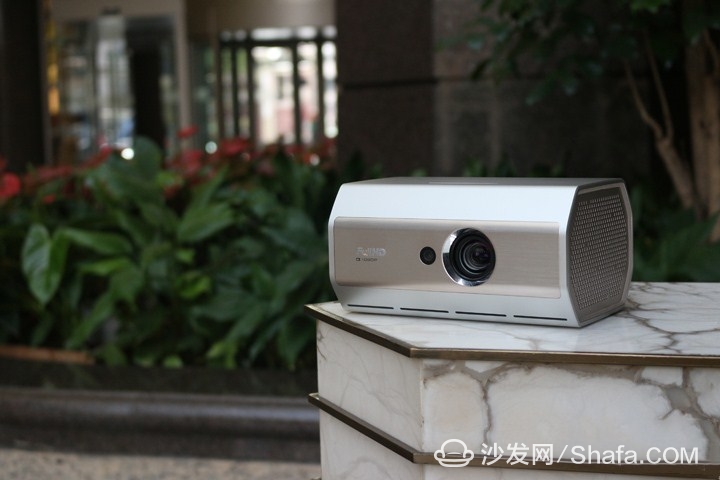 This compact micro-projector offers 1080P full HD picture quality, equipped with a color management engine that delivers Hollywood-grade visuals. Now, the Micro Whale M1 has arrived in the PChome evaluation room. How does it perform? Can it truly serve as a "home theater"? In this article, we’ll take the first test of the Micro Whale M1 and give you the answers!
**Design**
Upon unboxing, the M1 immediately caught my eye. Its octagonal design is unique and elegant. It takes up a space about the size of a book on a coffee table or desk. Despite its small size, it exudes a sculptural beauty and a sense of balance.
This compact micro-projector offers 1080P full HD picture quality, equipped with a color management engine that delivers Hollywood-grade visuals. Now, the Micro Whale M1 has arrived in the PChome evaluation room. How does it perform? Can it truly serve as a "home theater"? In this article, we’ll take the first test of the Micro Whale M1 and give you the answers!
**Design**
Upon unboxing, the M1 immediately caught my eye. Its octagonal design is unique and elegant. It takes up a space about the size of a book on a coffee table or desk. Despite its small size, it exudes a sculptural beauty and a sense of balance.
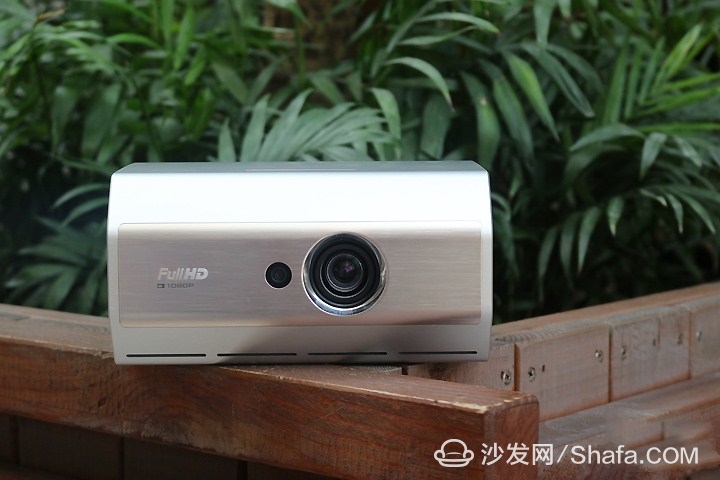 The unique design not only makes the M1 stable when projecting but also allows it to be easily moved with one hand. You can adjust the projection angle freely, offering multiple viewing positions. Imagine sipping a glass of wine before bed, lying comfortably in bed, and enjoying the audiovisual experience from the Micro Whale M1. The ceiling transforms into a large screen in seconds—truly a delightful experience.
The unique design not only makes the M1 stable when projecting but also allows it to be easily moved with one hand. You can adjust the projection angle freely, offering multiple viewing positions. Imagine sipping a glass of wine before bed, lying comfortably in bed, and enjoying the audiovisual experience from the Micro Whale M1. The ceiling transforms into a large screen in seconds—truly a delightful experience.
 The body of the M1 features a combination of platinum, silver, and rose gold. The surface is meticulously crafted. For the first time, a pure metal aluminum extrusion shell treated with sandblasting technology is used, showcasing a blend of technological artistry and elegance. It looks great at home and integrates well with any environment, making it a perfect gift option too.
The body of the M1 features a combination of platinum, silver, and rose gold. The surface is meticulously crafted. For the first time, a pure metal aluminum extrusion shell treated with sandblasting technology is used, showcasing a blend of technological artistry and elegance. It looks great at home and integrates well with any environment, making it a perfect gift option too.
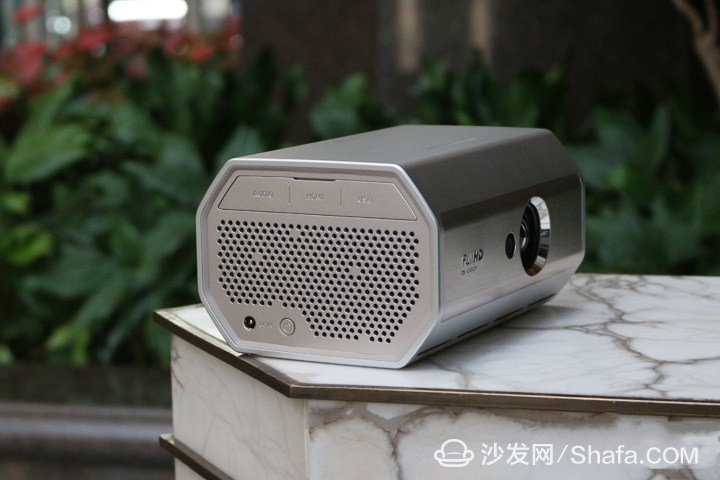 The interface of the Micro Whale M1 is located on the top of the body and includes a snug dust cover. Although the number of interfaces is limited, their specifications are impressive. The USB 3.0 port supports 5Gbps data transfer, enabling smooth playback of 4K videos and 62-megapixel images. It also features an HDMI 2.0 HD conversion interface and a 3.5mm headphone jack. Below these ports are the power switch and power jack.
The interface of the Micro Whale M1 is located on the top of the body and includes a snug dust cover. Although the number of interfaces is limited, their specifications are impressive. The USB 3.0 port supports 5Gbps data transfer, enabling smooth playback of 4K videos and 62-megapixel images. It also features an HDMI 2.0 HD conversion interface and a 3.5mm headphone jack. Below these ports are the power switch and power jack.
 USB 3.0 – 5Gbps high-speed data reading, supporting 4K video and 62 million pixel image playback. Compatible with various USB devices. HDMI 2.0 – easy connection to computers or other devices for video presentations. With the small blue whale Bluetooth remote, you can switch between video games or even use it for family karaoke, making it more versatile.
USB 3.0 – 5Gbps high-speed data reading, supporting 4K video and 62 million pixel image playback. Compatible with various USB devices. HDMI 2.0 – easy connection to computers or other devices for video presentations. With the small blue whale Bluetooth remote, you can switch between video games or even use it for family karaoke, making it more versatile.
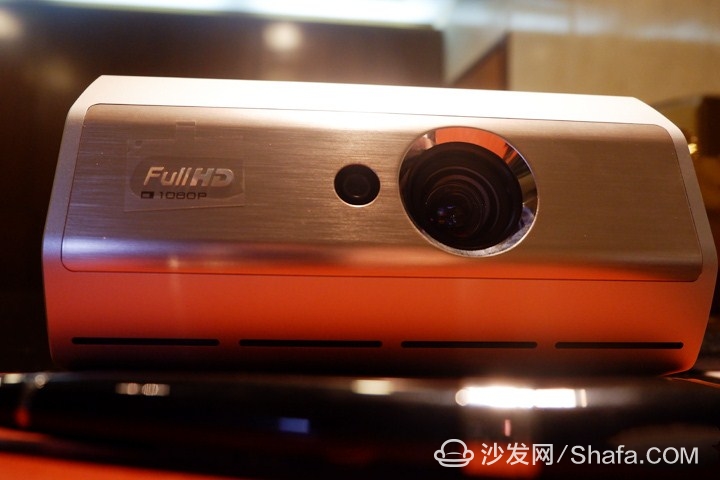 The LED light source of the Micro Whale M1 lasts up to 30,000 hours and uses a closed optical path design. It features a high-transmittance, wear-resistant glass lens coated to make cleaning easier and prevent dust intrusion, ensuring consistent image quality every time.
**Autofocus and Keystone Correction**
After booting up, the indicator on the top lights up, displaying a widescreen picture with full HD resolution. The Micro Whale M1 automatically focuses upon startup, and even after being moved during use, it can quickly refocus in just one second.
The LED light source of the Micro Whale M1 lasts up to 30,000 hours and uses a closed optical path design. It features a high-transmittance, wear-resistant glass lens coated to make cleaning easier and prevent dust intrusion, ensuring consistent image quality every time.
**Autofocus and Keystone Correction**
After booting up, the indicator on the top lights up, displaying a widescreen picture with full HD resolution. The Micro Whale M1 automatically focuses upon startup, and even after being moved during use, it can quickly refocus in just one second.

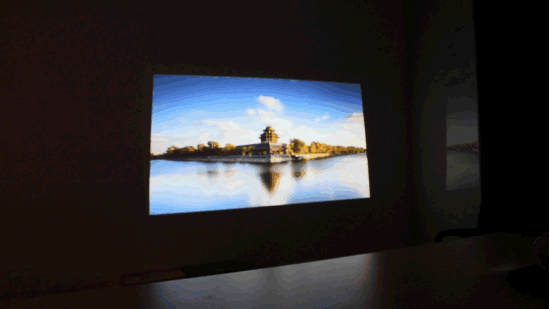
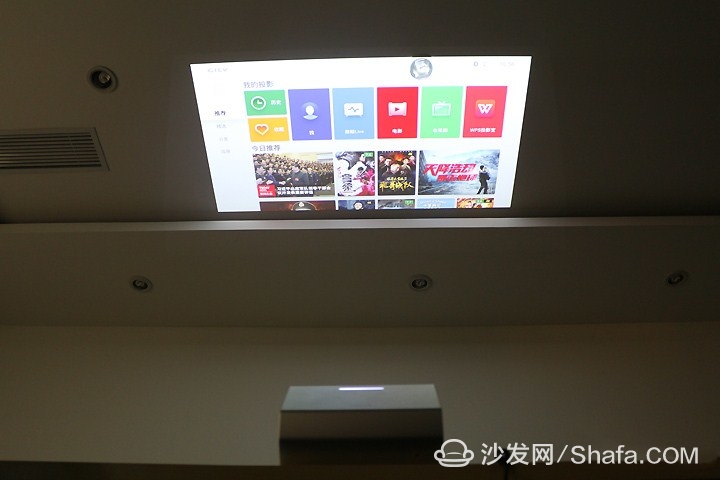 **Operating System**
The Micro Whale M1 runs on the WUI 2.0 intelligent system optimized for Android. The homepage uses a waterfall flow layout, divided into four sections: recommendation, selection, classification, and application. It’s simple and flat. Featured content enriches TV, drama, anime, and children’s programs, and can be customized based on user preferences to help find desired content quickly.
**Operating System**
The Micro Whale M1 runs on the WUI 2.0 intelligent system optimized for Android. The homepage uses a waterfall flow layout, divided into four sections: recommendation, selection, classification, and application. It’s simple and flat. Featured content enriches TV, drama, anime, and children’s programs, and can be customized based on user preferences to help find desired content quickly.
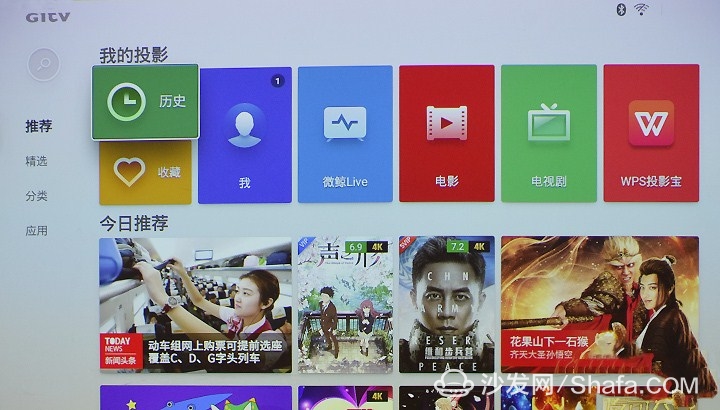

 Notably, the Micro Whale provides a wealth of free VR resources, including popular concerts, thrilling extreme sports, and cute cartoon games, offering a visually engaging experience.
The M1 also comes with a built-in projection hotspot. When turned on, you can connect your phone or other device to “Micro Whale Projection,†enter the password, and instantly project your screen onto a larger display. Even without Wi-Fi, you can play movies, music, or PPTs through the Micro Whale M1. This wireless screen-casting method breaks through platform, location, time, and network restrictions, offering real practical value. Whether you're on a business trip or traveling, the Micro Whale M1 lets you enjoy a big-screen experience anytime, anywhere.
Notably, the Micro Whale provides a wealth of free VR resources, including popular concerts, thrilling extreme sports, and cute cartoon games, offering a visually engaging experience.
The M1 also comes with a built-in projection hotspot. When turned on, you can connect your phone or other device to “Micro Whale Projection,†enter the password, and instantly project your screen onto a larger display. Even without Wi-Fi, you can play movies, music, or PPTs through the Micro Whale M1. This wireless screen-casting method breaks through platform, location, time, and network restrictions, offering real practical value. Whether you're on a business trip or traveling, the Micro Whale M1 lets you enjoy a big-screen experience anytime, anywhere.
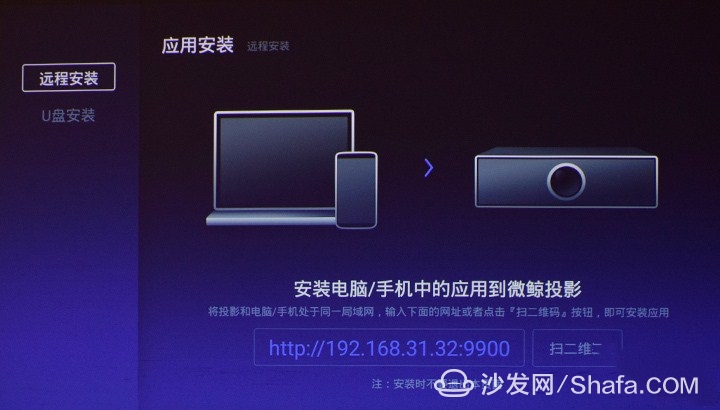 You can also install new applications via a mobile phone scan, transferring apps directly to the projector. This is a very convenient and practical design.
You can also install new applications via a mobile phone scan, transferring apps directly to the projector. This is a very convenient and practical design.

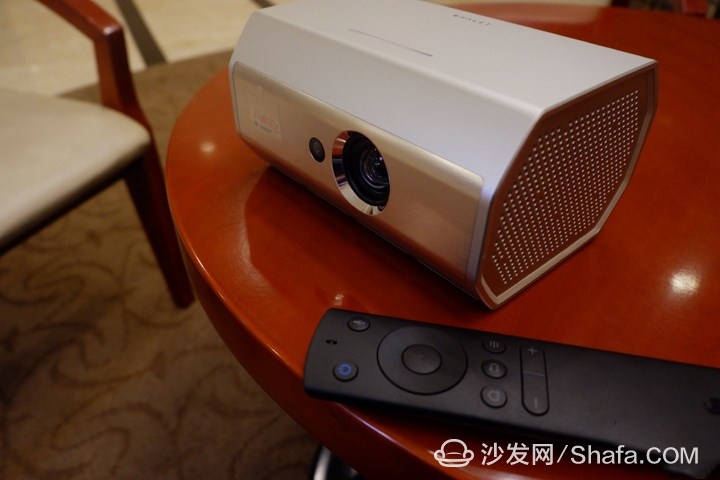 Through this remote, users can voice-control the projector. The response is quick and accurate, recognizing not only Mandarin but also Cantonese and even Sichuan dialect.
Through this remote, users can voice-control the projector. The response is quick and accurate, recognizing not only Mandarin but also Cantonese and even Sichuan dialect.
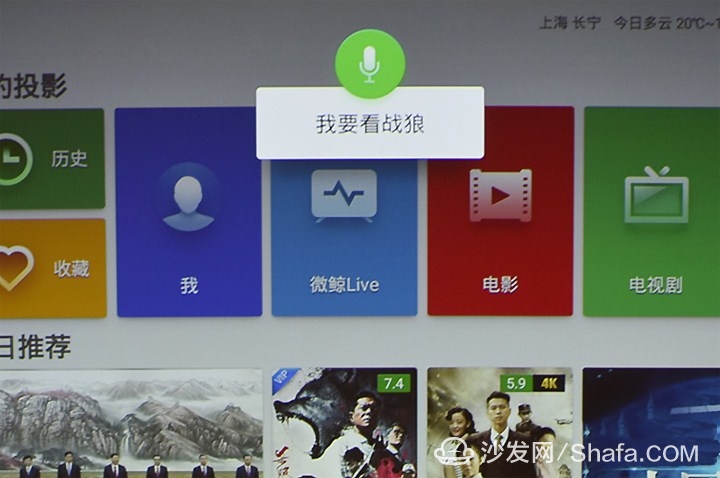
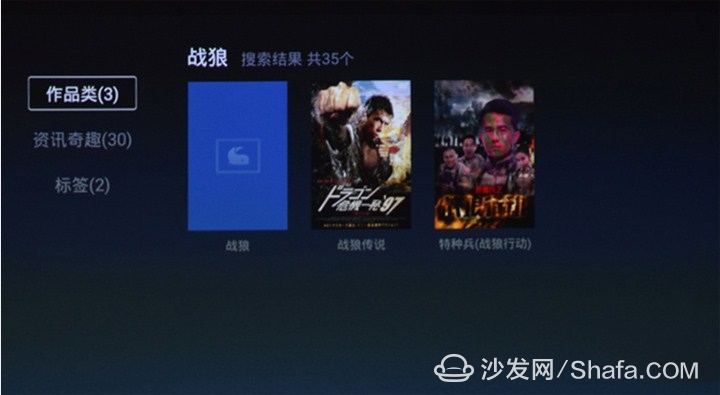 Via Bluetooth, the Micro Whale M1 can transform into a high-quality speaker. Pressing a key or saying “sound†turns off the screen and activates the speaker. It supports WiFi, Bluetooth, and Airplay connections, and can play online music platforms like虾米 (Xiami), æ°´æžœ (Shuiguoyinle), 喜马拉雅 (Himalaya), and å¯ä¹ (Kela). Once Bluetooth is enabled on your phone, it will automatically detect the M1, and a single click pairs it. Notably, the Bluetooth range is quite far, allowing control from up to 10 meters away.
Via Bluetooth, the Micro Whale M1 can transform into a high-quality speaker. Pressing a key or saying “sound†turns off the screen and activates the speaker. It supports WiFi, Bluetooth, and Airplay connections, and can play online music platforms like虾米 (Xiami), æ°´æžœ (Shuiguoyinle), 喜马拉雅 (Himalaya), and å¯ä¹ (Kela). Once Bluetooth is enabled on your phone, it will automatically detect the M1, and a single click pairs it. Notably, the Bluetooth range is quite far, allowing control from up to 10 meters away.
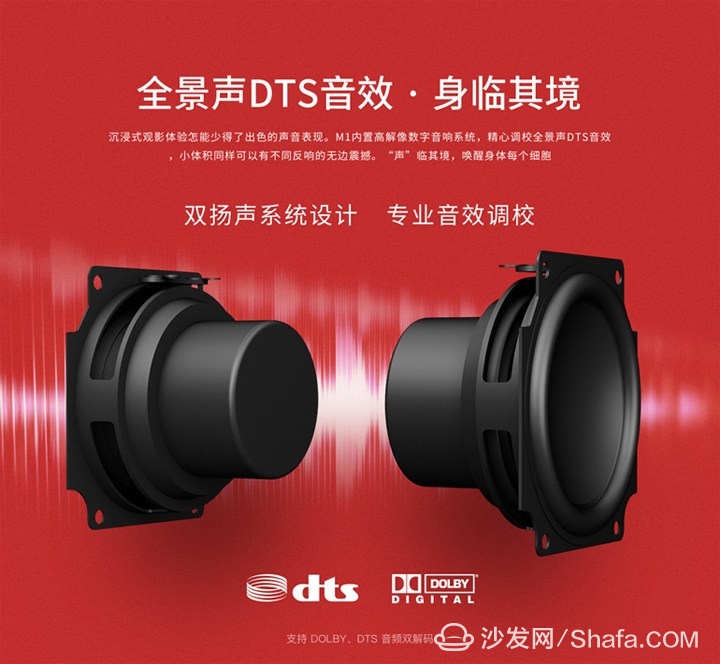 Inside the compact body of the M1, there is a fully enclosed panoramic sound dual-speaker system. It uses imported sheepskin mixed material and high-density fiber for damping. Combined with DTS & Dobby decoding and psychoacoustic spatial imaging technology, it creates a cinematic, multidimensional sound field.
Inside the compact body of the M1, there is a fully enclosed panoramic sound dual-speaker system. It uses imported sheepskin mixed material and high-density fiber for damping. Combined with DTS & Dobby decoding and psychoacoustic spatial imaging technology, it creates a cinematic, multidimensional sound field.
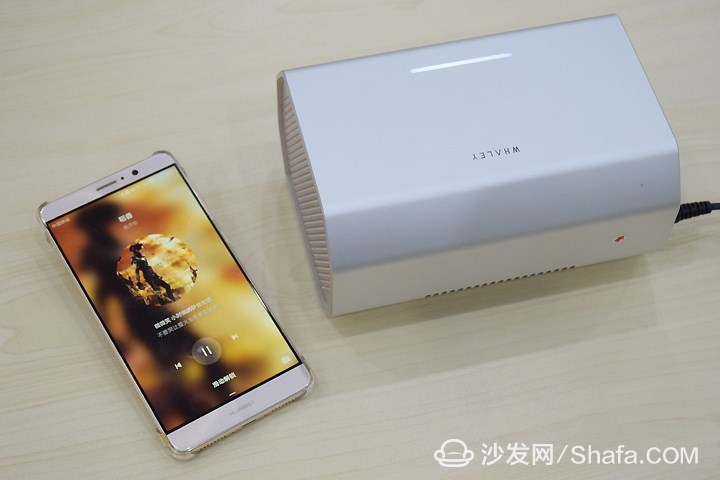 Testing the song “Dao Xiang,†the speaker perfectly reproduces Jay Chou’s unique voice, clear, clean, and full-bodied. Ordinary speakers often struggle to capture such soft tones, but the M1 delivers a rich, immersive experience.
**Cinematic Quality Performance**
As the first micro-projector to use a 0.33-inch full-HD DLP chip, the M1 reaches 1080P resolution, marking significant progress over 720P models. The visual effect is much better, with a narrower and darker screen, enhancing the cinematic feel.
Testing the song “Dao Xiang,†the speaker perfectly reproduces Jay Chou’s unique voice, clear, clean, and full-bodied. Ordinary speakers often struggle to capture such soft tones, but the M1 delivers a rich, immersive experience.
**Cinematic Quality Performance**
As the first micro-projector to use a 0.33-inch full-HD DLP chip, the M1 reaches 1080P resolution, marking significant progress over 720P models. The visual effect is much better, with a narrower and darker screen, enhancing the cinematic feel.
 Comparing the 1080P M1 (right) with a 720P model shows a clear difference. The M1’s image is brighter and more balanced.
Comparing the 1080P M1 (right) with a 720P model shows a clear difference. The M1’s image is brighter and more balanced.
 Close-up comparisons show that the 720P image is grainy, while the M1’s image is detailed. Beyond pixel advantages, the TI DLP DMD square pixel architecture ensures smoother visuals.
What about color accuracy? Let’s compare. While 720P might seem acceptable, the M1 clearly outperforms it.
Close-up comparisons show that the 720P image is grainy, while the M1’s image is detailed. Beyond pixel advantages, the TI DLP DMD square pixel architecture ensures smoother visuals.
What about color accuracy? Let’s compare. While 720P might seem acceptable, the M1 clearly outperforms it.
 On the right side of the M1 screen, the wheat field is brighter and more layered. On the left, the image is dimmer, with less vibrant colors.
On the right side of the M1 screen, the wheat field is brighter and more layered. On the left, the image is dimmer, with less vibrant colors.
 In the landscape image, the Temple of Heaven and woods on the right are bright and vivid, while the left side is duller, with some color cast.
In the landscape image, the Temple of Heaven and woods on the right are bright and vivid, while the left side is duller, with some color cast.
 In the night view, both images are black, but the branches in the lower left corner of the left image are nearly invisible, while the M1 captures them clearly.
In the night view, both images are black, but the branches in the lower left corner of the left image are nearly invisible, while the M1 captures them clearly.
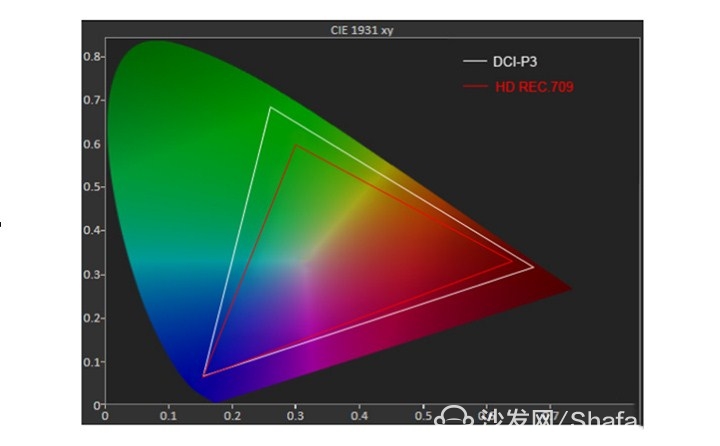 The M1 is positioned as a Hollywood-level micro-projector. Its wide color gamut, motion compensation, and other technologies support this claim. It meets the DCI-P3 standard, which is 26% wider than traditional standards like sRGB/Rec.709, delivering richer and more colorful visuals.
With the same hardware and software configuration as top-tier products, the M1’s A73 architecture easily handles 4K playback, and its 24 sharp enhancement color management engines bring dynamic quality up to LCD TV levels.
The M1 is positioned as a Hollywood-level micro-projector. Its wide color gamut, motion compensation, and other technologies support this claim. It meets the DCI-P3 standard, which is 26% wider than traditional standards like sRGB/Rec.709, delivering richer and more colorful visuals.
With the same hardware and software configuration as top-tier products, the M1’s A73 architecture easily handles 4K playback, and its 24 sharp enhancement color management engines bring dynamic quality up to LCD TV levels.



 Enjoying close-ups of 1080P movie screens, the colors and motion effects are excellent. The image is smooth, with clear details in moving pictures. Skin textures, splashes, and smoke are all well-represented, creating an immersive experience. Sound effects are also strong, with no noticeable distortion. Vocals are clear, and explosions and roars in large scenes remain intact.
**Review Summary: A Dual Home Theater Experience**
Can microprojectors serve as a home theater? Standards vary, so the answer may differ. However, as an editor, I couldn’t accept rough picture quality and poor sound effects. Last year, I would have said no. But the emergence of the Micro Whale M1 changed my mind.
Enjoying close-ups of 1080P movie screens, the colors and motion effects are excellent. The image is smooth, with clear details in moving pictures. Skin textures, splashes, and smoke are all well-represented, creating an immersive experience. Sound effects are also strong, with no noticeable distortion. Vocals are clear, and explosions and roars in large scenes remain intact.
**Review Summary: A Dual Home Theater Experience**
Can microprojectors serve as a home theater? Standards vary, so the answer may differ. However, as an editor, I couldn’t accept rough picture quality and poor sound effects. Last year, I would have said no. But the emergence of the Micro Whale M1 changed my mind.
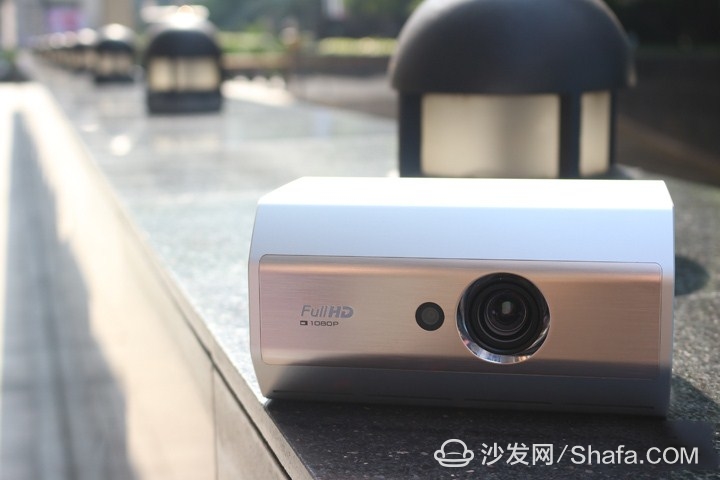 This stunning 1080P micro-projector significantly improves picture quality and sound effects compared to previous models. With features like auto-focus, keystone correction, and more, it greatly enhances user experience. It’s a low-cost, functional, and practical home entertainment solution for most users.
For smart TV and box information, visit Smart TV/box information network sofa butler (http://), China's influential TV box and smart TV website, providing information, communication, TV boxes, smart TVs, smart TV software, etc. Answering questions.
This stunning 1080P micro-projector significantly improves picture quality and sound effects compared to previous models. With features like auto-focus, keystone correction, and more, it greatly enhances user experience. It’s a low-cost, functional, and practical home entertainment solution for most users.
For smart TV and box information, visit Smart TV/box information network sofa butler (http://), China's influential TV box and smart TV website, providing information, communication, TV boxes, smart TVs, smart TV software, etc. Answering questions.







GIF animation demo
After prolonged use, thermal defocusing is a common issue for micro-projector users. This automatic focusing feature significantly enhances user experience, allowing free placement without fixed installation.
GIF animation demo
In addition to automatic focusing, vertical keystone correction is crucial for the Micro Whale M1’s performance. Equipped with a 3-axis gravity sensor, it offers powerful vertical keystone correction. Its adjustment range exceeds most similar models, allowing for 360-degree rotation.





Newly installed app appears in the app bar
Despite being a micro-projector, the Micro Whale M1 offers a rich resource library and a powerful operating experience comparable to LCD and laser TVs. **Voice Control and Professional Audio** The remote control for the Micro Whale M1 is familiar to users. It connects via Bluetooth instead of infrared. During the first setup, you can press the left and right buttons simultaneously on the projector to pair with the remote. A short beep confirms successful pairing. Compared to infrared, Bluetooth offers faster and more sensitive control with a longer range.















Shenzhen Essenvape Technology Co., Ltd. , https://www.essenvape.com